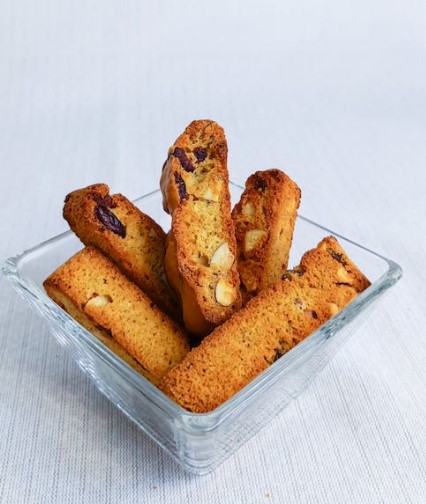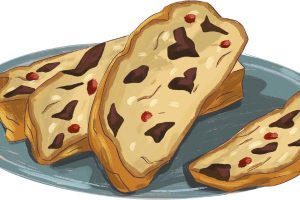
In the world of baked goods, there are countless varieties to choose from. Two popular options that often come up in discussions are Mandel Bread and Biscotti. While both of these treats may appear similar at first glance, they have distinctive characteristics that set them apart. In this article, we will explore the key differences between Mandel Bread and Biscotti, helping you understand their unique features and flavors.
Origins and History
Mandel Bread, also known as Mandelbrot, is a traditional Jewish dessert with roots tracing back to Eastern Europe. It is often associated with Jewish holidays and celebrations. The name “Mandel Bread” translates to “almond bread” in Yiddish, highlighting the use of almonds in the recipe. Mandel Bread is typically baked in loaf form and then sliced into individual cookies.
On the other hand, Biscotti is an Italian creation that originated in the city of Prato. The word “Biscotti” translates to “twice-baked” in Italian, which refers to its unique baking process. Traditionally, Biscotti were baked twice to achieve a dry and crunchy texture, making them perfect for dunking in coffee or wine. Biscotti gained popularity during the Renaissance period and are now enjoyed worldwide.
Ingredients and Texture
Mandel Bread and Biscotti share some common ingredients, such as flour, sugar, eggs, and baking powder. However, the key distinguishing factor lies in the addition of almonds. Mandel Bread prominently features almonds, providing a rich and nutty flavor that defines its taste. Almonds are typically chopped or slivered and mixed into the dough, adding a delightful crunch to each bite.
Biscotti, on the other hand, may or may not contain almonds. While traditional Biscotti recipes include almonds, there are various other flavor variations available today, such as chocolate, cranberry, or pistachio. The texture of Biscotti is dry and crunchy, achieved through the double baking process. This makes them ideal for dipping into beverages without becoming soggy.
Shape and Presentation
In terms of shape and presentation, Mandel Bread and Biscotti exhibit noticeable distinctions. Mandel Bread is often baked as a loaf and then sliced diagonally into oblong cookies. These slices are then baked further until they acquire a light golden-brown color. The resulting Mandel Bread cookies have a softer texture compared to Biscotti and are slightly thicker.
On the contrary, Biscotti are typically shaped as long, narrow, and rectangular cookies. After the initial baking, they are sliced crosswise into individual cookies and then baked again to achieve the desired dry and crispy consistency. Biscotti are known for their firm texture, perfect for holding up to dunking without falling apart.
Serving and Pairing
Both Mandel Bread and Biscotti are versatile treats that can be enjoyed in various ways. Mandel Bread is often served alongside a cup of hot tea or coffee, allowing the flavors to meld together. It pairs well with a wide range of beverages and can be enjoyed as a standalone snack or dessert. Some variations of Mandel Bread incorporate additional ingredients such as chocolate chips or dried fruits, offering a delightful burst of flavors.
Biscotti, with their firm and dry texture, are specifically designed for dipping. They are commonly served alongside a steaming cup of coffee or espresso. The dryness of Biscotti allows them to soak up the liquid without losing their structure, creating a harmonious combination of flavors. Biscotti can also be enjoyed on their own and are often found in dessert platters or gift baskets.
Conclusion
While Mandel Bread and Biscotti share similarities in terms of ingredients and baking techniques, they have distinct characteristics that make each one unique. Mandel Bread, with its almond-infused dough and softer texture, offers a delightful blend of sweetness and crunchiness. Biscotti, on the other hand, boasts a double-baked crunch and versatility in flavors.
Whether you prefer the traditional flavors of Mandel Bread or the dunking experience with Biscotti, both treats have their place in the world of baked goods. So, why not try both and savor the different pleasures they bring? Indulge in the rich heritage of Mandel Bread and the Italian flair of Biscotti, and let your taste buds be the judge.










